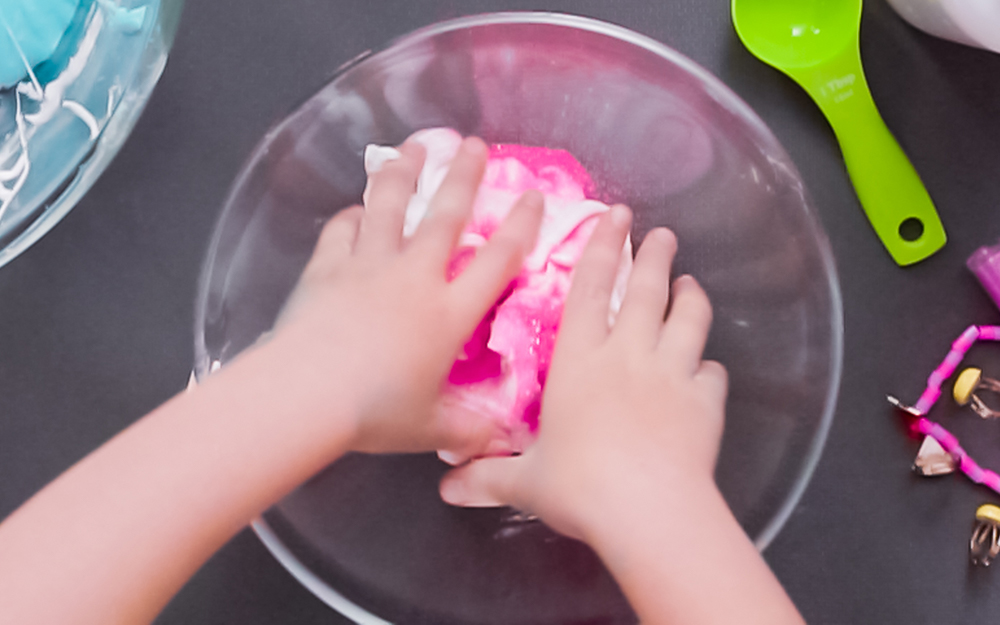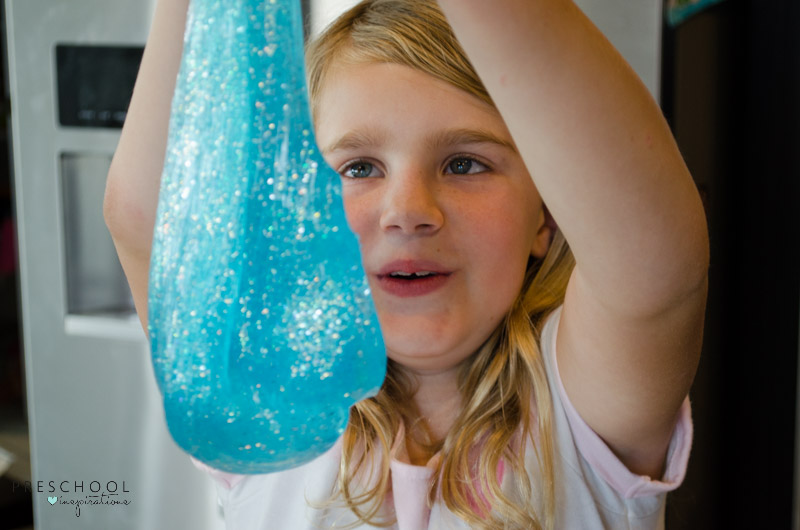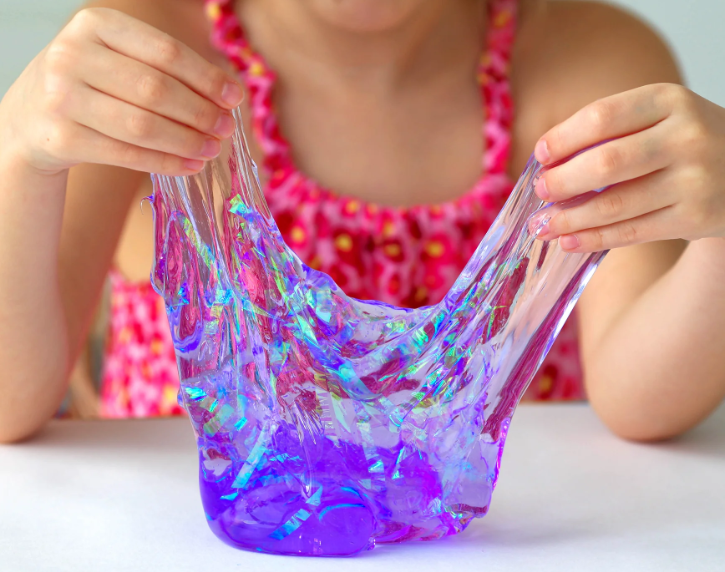Slime is a fascinating substance that’s perfect for kids and adults alike. Slime making is a fun and creative activity that can provide hours of entertainment and learning.
But what exactly is slime? Slime is a type of non-Newtonian fluid that’s made from a combination of glue, water, and a slime activator. When you mix these ingredients together, they form a sticky and stretchy substance that’s perfect for playing with. Whether you’re a seasoned slime maker or just starting out, there’s always something new to learn and discover about slime.
The Magic of Slime: What Makes it So Special?
The world of slime is a fascinating one, full of colorful textures and endless possibilities. But what makes slime so special? For starters, slime is a non-Newtonian fluid, meaning it doesn’t behave like regular liquids. Instead, it can change shape and form depending on how it’s manipulated.
One of the most unique properties of slime is its ability to be both sticky and stretchy. This is due to the combination of glue, water, and slime activators that make up the slime. When you mix these ingredients together, they form a substance that’s both fun to play with and educational.
Slime is also a great way to learn about science and chemistry. By experimenting with different slime recipes and ingredients, kids can learn about concepts like polymers, cross-linking, and chemical reactions. This makes slime a fun and interactive way to learn about science.
Whether you’re a kid or an adult, slime is a great way to relax and have fun. It’s a tactile and sensory experience that can be very therapeutic. So why not give slime a try and see what makes it so special?
Getting Started with Slime Making: A Beginner’s Guide

Making ooze is a tomfoolery and simple movement that can be delighted in by children and grown-ups the same. To get started, you’ll need a few basic ingredients, including glue, water, and a slime activator. You can also add food coloring and other decorations to make your slime more colorful and fun.
One of the most important things to remember when making slime is to use the right ratio of ingredients. If you use too much glue, your slime may end up too sticky. On the other hand, if you use too much water, your slime may end up too runny. Trying different things with various proportions can assist you with tracking down the ideal equilibrium.
Another key to making great slime is to use high-quality ingredients. Look for glue that’s specifically designed for slime making, and choose a slime activator that’s safe and effective. You can also add other ingredients, such as glitter or sequins, to make your slime more fun and interesting.
With a little practice and patience, you can create all sorts of amazing slime recipes. From classic glue slime to more advanced recipes like cloud slime and clear slime, the possibilities are endless.
The Science Behind Slime: Understanding Non-Newtonian Fluids
• What are Non-Newtonian Fluids?
Non-Newtonian fluids are liquids that don’t behave like regular liquids. They can change shape and form depending on how they’re manipulated, and they can exhibit some very strange and fascinating properties.
• How Does Slime Work?
Slime works by using a combination of glue, water, and a slime activator to create a sticky and stretchy substance. When you mix these ingredients together, they form a polymer chain that gives slime its unique properties.
• What is Cross-Linking?
Cross-linking is a chemical reaction that occurs when the polymer chains in slime are linked together. This creates a strong and flexible bond that gives slime its ability to stretch and deform.
• How Can You Apply the Science of Slime?
The science of slime can be applied in all sorts of ways, from creating new materials and products to understanding complex scientific concepts. By experimenting with slime and learning about its properties, you can gain a deeper understanding of the world around you.
Slime Making Tips and Tricks: How to Get the Best Results

• Choosing the Right Ingredients
Choosing the right ingredients is key to making great slime. Look for glue that’s specifically designed for slime making, and choose a slime activator that’s safe and effective.
• Experimenting with Different Ratios
Experimenting with different ratios of ingredients can help you find the perfect balance for your slime. Try adding more or less glue, water, or slime activator to see how it affects the texture and consistency of your slime.
• Adding Color and Texture
Adding color and texture to your slime can make it more fun and interesting. Try adding food coloring, glitter, or sequins to create a unique and personalized slime recipe.
• Troubleshooting Common Problems
Troubleshooting common problems can help you overcome obstacles and achieve success with your slime making. Try adding more slime activator if your slime is too sticky, or more glue if it’s too runny.
Conclusion
Making sludge is a tomfoolery and simple action that can be delighted in by children and grown-ups the same. With just a few simple ingredients, you can create all sorts of amazing slime recipes. From classic glue slime to more advanced recipes like cloud slime and clear slime, the possibilities are endless.
So why not give slime making a try? It’s a great way to relax and have fun, and it’s also a great way to learn about science and chemistry. With a little practice and patience, you can become a slime making master and create all sorts of amazing slime recipes.
FAQs
Q: What is slime made of?
A: Slime is typically made from a combination of glue, water, and a slime activator, such as borax or liquid starch.
Q: Is slime safe for kids?
A: Yes, slime is generally safe for kids, but it’s always a good idea to supervise them when they’re making and playing with slime.
Q: Can I make slime without borax?
A: Yes, there are several alternatives to borax that you can use to make slime, including liquid starch, saline solution, and contact lens solution.
Q: How do I store slime?
A: Slime can be stored in an airtight container or plastic bag. Try to get it far from direct daylight and intensity sources.
Q: Can I make slime with different textures?
A: Yes, you can make slime with different textures by adding different ingredients, such as glitter, sequins, or sand.






